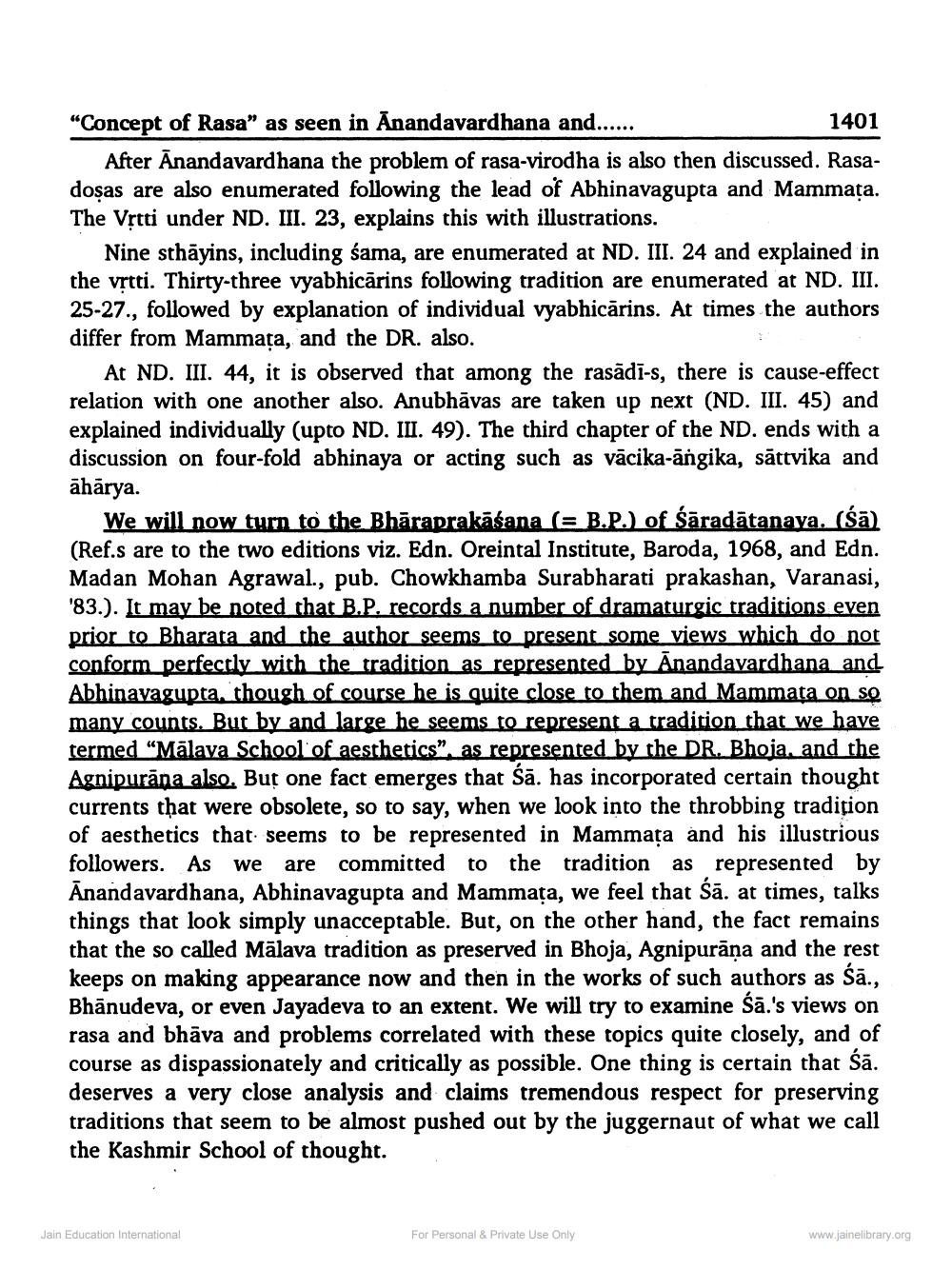________________
"Concept of Rasa" as seen in Anandavardhana and....
1401 After Anandavardhana the problem of rasa-virodha is also then discussed. Rasadosas are also enumerated following the lead of Abhinavagupta and Mammata. The Vrtti under ND. III. 23, explains this with illustrations. Nine sthāyins, including sama, are enumerated at ND. III. 24 and explained in
rty-three vyabhicārins following tradition are enumerated at ND. III. 25-27., followed by explanation of individual vyabhicărins. At times the authors differ from Mammata, and the DR. also.
At ND. III. 44, it is observed that among the rasādi-s, there is cause-effect relation with one another also. Anubhāvas are taken up next (ND. III. 45) and explained individually (upto ND. III. 49). The third chapter of the ND. ends with a discussion on four-fold abhinaya or acting such as vācika-angika, sāttvika and āhārya.
We will now turn to the Bhāraprakāśana (= B.P.) of śāradātanaya. (śā) (Ref.s are to the two editions viz. Edn. Oreintal Institute, Baroda, 1968, and Edn. Madan Mohan Agrawal., pub. Chowkhamba Surabharati prakashan, Varanasi, '83.). It may be noted that B.P. records a number of dramaturgic traditions even prior to Bharata and the author seems to present some views which do not conform perfectly with the tradition as represented by Anandavardhana and Abhinavagupta, though of course he is quite close to them and Mammata on se many counts. But by and large he seems to represent a tradition that we have termed "Mālava School of aesthetics". as represented by the DR. Bhoja, and the Agnipurāna also. But one fact emerges that Šā. has incorporated certain thought currents that were obsolete, so to say, when we look into the throbbing tradition of aesthetics that seems to be represented in Mammața and his illustrious followers. As we are committed to the tradition as represented by Anandavardhana, Abhinavagupta and Mammata, we feel that Sā. at times, talks things that look simply unacceptable. But, on the other hand, the fact remains that the so called Mālava tradition as preserved in Bhoja, Agnipurāna and the rest keeps on making appearance now and then in the works of such authors as Sā., Bhānudeva, or even Jayadeva to an extent. We will try to examine Sā.'s views on rasa and bhāva and problems correlated with these topics quite closely, and of course as dispassionately and critically as possible. One thing is certain that Śā. deserves a very close analysis and claims tremendous respect for preserving traditions that seem to be almost pushed out by the juggernaut of what we call the Kashmir School of thought.
Jain Education International
For Personal & Private Use Only
www.jainelibrary.org




